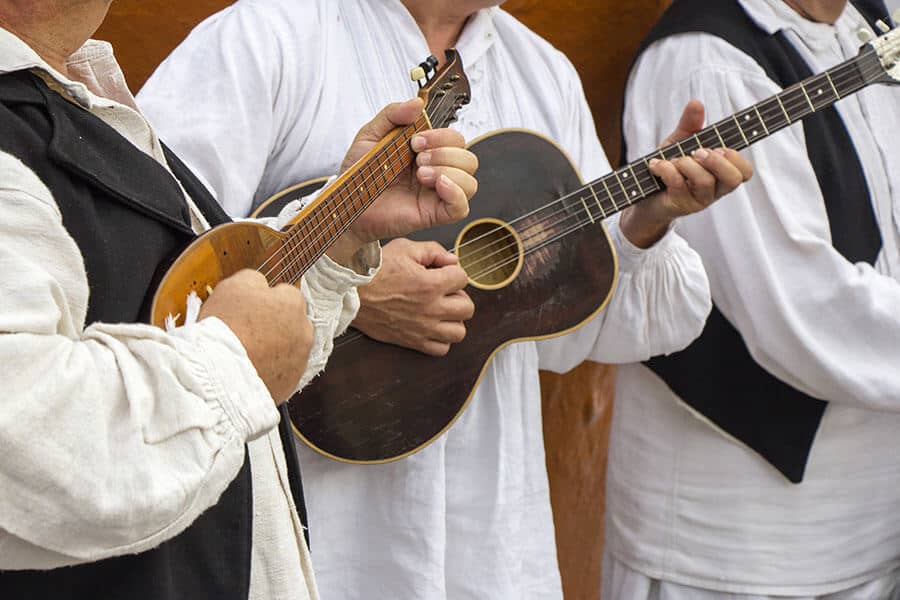With a land full of history and a beautiful artistic heritage, the Republic of Croatia embodies its identifiable sounds through poetry and music. Throughout the centuries, the country has musically developed into a musical phenomenon through the backbones of medieval sounds to rock battling sounds of “Croatian New Wave”. Will Croatia continue to make monumental artistic waves in world music?
I am astounded by the way my life has changed through the eyes of a global perspective. Through many aspects of my life, I am bombarded with culture shock. However, the heavy friction of culture shock does not always have negative connotations. Through discovering the world of music across the world pond, I have managed to discover the root of influences from the bands I love dearly. The indie pop/rock scene has crossed a multitude of borders. I was always curious as to where the distant sounds curated from. I was pleased to find the sounds that graced my eardrum throughout the years, have had major Croatian influences. The music of Croatia has developed two influential aspects that embody the sound of the Republic. Central European and Mediterranean.
In terms of Central European influence, the music’s inspiration was present in more central and northern parts of the country. In terms of Mediterranean suggestion, coastal regions such as Slavonia and Dalmatia embody the influence with a mixture of folk elements. With the unique texture of Schlager and Chanson music, the sounds of the mid-20th century formed a strong base for Croatian popular music.
Stretching back to the 11th and the 15th centuries, Croatian musical culture began through sacral representation through “Latin Medieval Liturgical Chant Manuscripts”. With Croatians, philosophy surrounding Humanism and interest in music introduced new musical ideas and interpretation. During the time, music and dance were important parts of theatrical expression as music narrated many artistic functions. Croatian composers such as “Ivan Lukacic” and “Atanazije Jurjevic” were monumental figures of Croatian Medieval music. Through the Romanticism period, Croatia advanced through art such as literature but also began showing the prominent presence of folk music.
Croatian Folk Music
Croatia is associated with various folk implications including “Ganga”, “Klapa”, “Tamburica”, “Gusle”, and“Diple”. The passionate form of singing “Ganga” is vocalized in small towns of Croatia by a main singer, singing one line of lyrics as a choir like nature, backs up in a wail. The style of folk music has inspired global music as “Craig Walsh” (American Composer) capitalized on the “Ganga” incorporation in “String Quartet No.1”. “Ganga” further began political expression in the Croatian Homeland War.
With the Mediterranean side, “Klapa” embodies acapella stylings and premiered in the traditional music scene in the mid-19th century. A traditional Klapa group consists of Tenor, Tenor II, a Baritone, and Bass. With rare accompaniment of “mandolin” and “guitar”, “Klapa” became popular for folk Croatian Music and has remained a prominent vocal styling for the modern generation.
Similar to the “mandolin”, “Tamburica” music which involves the traditional string instrumentation from the country of Croatia. The popular folk music of the 1800s was formed through small bands. The bands incorporate themes of love and village life which are accompanied by “bisernica”, a traditional “tamburitza” instrument. Many of the folk pop combinations today are highly influenced by the folk stylings of Tambura music.
An important instrument of Dalmatia, “Gusle” is a single stringed instrument that is traditionally used in the Dinarides region of Southern Europe. The instrument is used in parts of Bosnia as well as Herzegovina. “Mile Krajina” (contemporary Gusle player) embodies the historic sounds of poetry and visions of past heroes of the Croatian War of Independence.
In terms of the woodwind instruments of Croatian Music, “Diple” is an instrument that is played from the Dalmatia islands. The instrument formed a unique style of traditional Croatian music and continues to be a recognizable sound for the people of Croatia. Other folk music such as the music of Zagorje is known for small orchestras consisting of Harmonike, Cimbule and Tamburice. Additionally, music of Medimurje has painted a strong picture of Croatian musical interpretation for today’s pop and modern music.
Croatian’s Modern Sound
Croatia has grown through the styling of pop music. With musical influence, the canzone (music of Italy) embodies historic native traditional sound. Pop singers such as “Vice Vukov”, “Darko Domjan” and“Gabi Novak” continue to be figures of Croatian Pop sound. Rock was made a crucial part of Croatians’ global presence as the Croatian new movement exploded onto the scene in 1979/1980. According to Wikipedia, the Yugoslavian rock movement at the time sparked controversial waves in terms of commercial and quality success. Freedom of speech and poverty empowered the youth to rebel against the governmental system through controversial musical entities. Popular bands such as “Azra”, “Haustor”, and “Film” made monumental statements of rock intelligence, as Croatia made notable fame for their essence and unique rock sound.
With the forceful nature of pop music, the dance music of Croatia developed during the 1980s and 1990s. With the trendy nature of euro disco, electronic music such as house and trance continue to make its musical appliance through many genres and musical stylings of modern sound. Artists such as “Svemirko“ mix an authentic sub-electronic sound with the new wave of the1980s alive and well through his modern stylings of classic indie rock.
The global development of hip hop through the sounds of the USA, Croatian rap emerged in the 1990s. Although seen as a subculture in comparison to the heavily rock/pop sound, bands such as “Elemental“ remain rap figures in cultural identity for generations to come.
My Croatian sister and band member of the Indie rock group “Aura Quartz” prolongs her musical national influence and viewpoint of Croatian traditional music.
“Traditional music influences pop music, but essentially it is so much embedded into the culture, that everyone knows the traditional sound. The culture of Croatian music still lives on through the people for generations to come and remains a strong appreciation.” (Lesko)
It’s safe to say that there is no worry of whether the authentic historic sounds of Croatia will stand the span of time. As many customs and places around the world endure, the importance of maintaining musical traditions still reigns on. The Republic of Croatia will remain a music powerhouse.
Photo: Shutterstock
Read more cultural reviews!
Support us!
All your donations will be used to pay the magazine’s journalists and to support the ongoing costs of maintaining the site.
Share this post
Interested in co-operating with us?
We are open to co-operation from writers and businesses alike. You can reach us on our email at [email protected]/[email protected] and we will get back to you as quick as we can.










